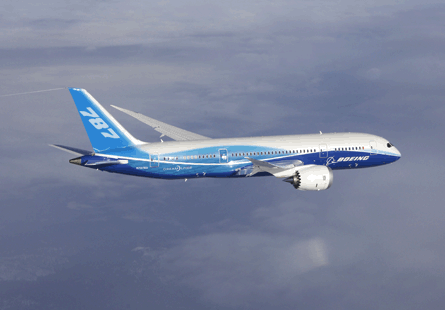As Boeing passes the 150h flight hour mark in its first two months of trials, the 787 test fleet is poised to double in size.
Two of the four Rolls-Royce Trent 1000-powered test aircraft have flown to date, and the third, ZA004, was set to join the programme on 21 February. This aircraft is designated for high-speed aerodynamic performance, community noise testing, nautical air mile testing and extended range twin operations trials, as well as a flight loads survey to compare expected versus observed structural loading.
Meanwhile, ZA003, which will support cabin interiors testing, as well as flightdeck noise, avionics and electromagnetic effects/high intensity radio frequency testing, is due to fly around 2 March. It will also validate design changes to the environmental control systems, as well as demonstrate galley and cargo cooling systems that are not installed on the other flight-test aircraft.
 |
|---|
© Boeing |
ZA001, which has flown more than 100h since its first flight on 15 December, began aerodynamic flutter testing on 14 February with speed trials beginning at Mach 0.60 at 15,000ft (4,580m). The test aircraft will clear the type through to its maximum operating speed of M0.92 in level flight at various altitudes.
ZA002, which has accumulated more than 50h of flight, has continued with stability and control tests of the flight controls, as well as additional stall tests.
The next major milestone for the 787 will be the type inspection authorisation that will see the US Federal Aviation Administration invited on board for the certification effort that will culminate in delivery to All Nippon Airways in the fourth quarter.
Boeing also confirms that the last two flight-test aircraft, ZA005 and ZA006, have completed side-of-body modifications and both are being restored before beginning the flight-test and certification programme for the General Electric GEnx-1B-powered variant.
ZA005 and ZA006 are expected to fly as early as mid-March and mid-April, respectively.
Source: Flight International























